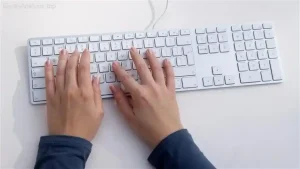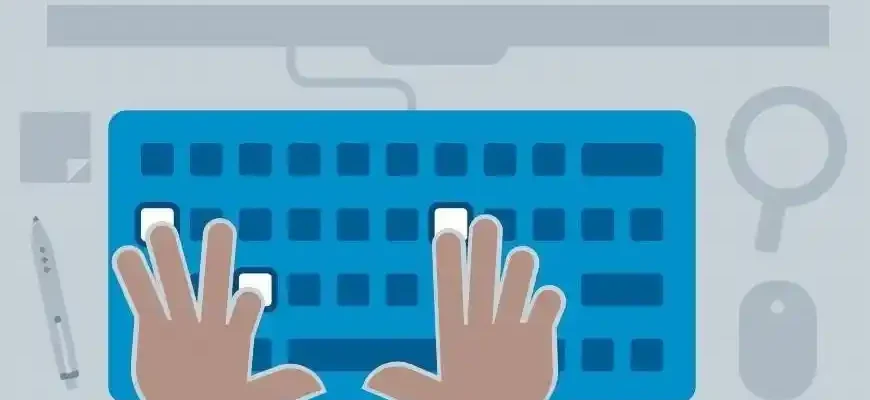Improving your typing speed is something that can bring enormous benefits to your professional and personal life. Whether you’re someone who types for a living or simply needs to type faster to stay ahead of the curve in today’s digital world, enhancing your typing skills can improve productivity, reduce stress, and save time. So, let’s dive in and look at what the experts say, backed by science, surveys, and research, as well as some helpful tips from people who have been there, done that.
The Importance of Typing Speed
Let’s get the obvious out of the way: typing speed matters. In our increasingly digital world, typing is a key skill that can affect everything from your job performance to your general mental well-being. According to the American Management Association, employees who can type 50 words per minute (WPM) or more are more productive in office settings than those who type slower. This is particularly important in jobs involving data entry, transcription, programming, and even academic writing.
But typing is not just a work-related skill. For those of us who still enjoy the occasional bit of creative writing, blogging, or even gaming, improving typing speed can be incredibly rewarding. It’s one of those rare skills that not only saves time but also makes the process more enjoyable.
The Science of Typing: Cognitive Load and Neuroplasticity
Before we get to the practical tips, let’s take a quick dive into how typing works from a neurological standpoint. When you type, your brain has to coordinate multiple processes, including recognizing the letters, moving your fingers to the right keys, and adjusting to the rhythm. Over time, as you practice, your brain forms neural pathways that make this coordination more automatic and efficient—this process is called neuroplasticity.
Research has shown that just like learning a musical instrument or a new language, practicing typing improves cognitive function and hand-eye coordination. A study by the Journal of Experimental Psychology showed that skilled typists could recall letters and words faster, thanks to the brain’s ability to automate these actions. In simple terms: the more you practice, the less effort it takes, and the faster you become.
Common Typing Mistakes That Slow You Down
Let’s talk about the elephant in the room. Everyone has their typing quirks—things we do unconsciously that slow us down. Some of the most common culprits include:

- Looking at the Keyboard: We all know the feeling: your fingers fumble and you instinctively glance down at the keys. The problem? Looking at the keyboard disrupts your flow. Research by typing experts like the Typing Institute of America shows that this drastically reduces your typing speed because it breaks the automatic muscle memory you’re developing.
- Incorrect Finger Placement: Using the wrong fingers for certain keys can lead to inefficient typing. This is one of the main reasons people type slower. A little research from cognitive psychology reveals that people who use all their fingers, rather than just a few, are significantly faster and more accurate typists.
- Bad Posture: Typing with your shoulders hunched, elbows at weird angles, or wrists bent at odd positions can not only slow you down but also lead to repetitive strain injuries (RSI). The American Academy of Neurology has highlighted that bad posture contributes to problems like carpal tunnel syndrome, which can derail your typing speed and accuracy.
- Over-Reliance on Backspace: Constantly correcting mistakes slows you down more than you might think. Studies from Typing Club have shown that if you keep stopping to fix errors, your brain has to reset its cognitive flow each time, which leads to lower typing speed.
How to Improve Typing Speed: Practical Tips and Exercises
Let’s move on to the good stuff: how to get better. Here’s a mix of scientifically backed methods and personal advice from folks who have improved their typing skills over time.
- Learn Touch Typing
Touch typing is the gold standard. It’s when you type without looking at the keyboard, relying instead on muscle memory. Studies from the National Institute of Occupational Safety and Health (NIOSH) have proven that touch typists can type much faster and with greater accuracy than those who use a “hunt-and-peck” method. If you haven’t yet, take the time to learn touch typing. Start with the home row (ASDF, JKL;) and practice until it feels natural. - Practice with Typing Software and Online Games
There are countless typing programs and online tools that help you improve your speed and accuracy. Tools like TypingClub, Keybr, and Ratatype are free and designed to guide you through a series of exercises that build your speed gradually. These platforms use adaptive learning, meaning the more you practice, the more the program adjusts to your skill level, pushing you to improve at a steady pace. - Use Proper Finger Positioning
It’s essential to have the correct hand placement. The fingers should rest on the “home row” keys (ASDF for the left hand, JKL; for the right hand). From here, your fingers should reach up for the top row (QWERTY) or down to the bottom row (ZXCV), rather than stretching too far or relying on one or two fingers. Many typing experts agree that having the right hand positioning can boost your speed by 20–30%. - Build Speed Gradually
Focus on accuracy first, then work on increasing your speed. If you try to type fast right away, you’ll likely make more mistakes, which will actually slow you down in the long run. The key is to practice slowly but accurately, then gradually increase your speed once you’re comfortable. - Mind Your Posture and Ergonomics
This may sound a little dry, but having the right ergonomic setup is essential for long-term success. Sit up straight with your feet flat on the ground. Your elbows should form a 90-degree angle, and your wrists should remain straight, not bent. A comfortable chair, a good desk, and possibly a wrist rest can go a long way in reducing strain and fatigue. - Use Online Typing Challenges and Competitions
A fun way to improve is to participate in typing competitions or challenges. Sites like 10FastFingers or TypeRacer let you race against others, making typing feel more like a game than a chore. This can help increase your motivation and keep things interesting. - Stay Consistent and Be Patient
As with any skill, consistency is key. The more regularly you practice, the better you’ll get. Even just 15 minutes a day of dedicated practice can lead to significant improvements in a few weeks. The key is to be patient and not expect instant results.

What’s the Ideal Typing Speed?
According to The National Typing Test, the average typing speed for most people is around 40 WPM. A proficient typist typically hits speeds of 60–80 WPM, while top-tier typists can reach 120 WPM or more. But don’t get caught up in numbers. The goal should be to type comfortably and accurately, not just fast. If you can type with an accuracy rate of 95% or higher, you’re doing great!
Common Pitfalls and How to Overcome Them
- Frustration: Learning to type faster can be frustrating at times, especially when progress feels slow. Remember, everyone hits plateaus. Take breaks, and if necessary, switch up your learning method to keep things fresh.
- Repetitive Strain Injuries (RSI): If you feel pain or discomfort in your fingers, wrists, or shoulders, it’s time to reassess your ergonomics and typing posture. Consider consulting a physical therapist or ergonomic specialist if you experience persistent pain.

Real People’s Opinions on Typing Speed
- Sarah, 24, USA: “I’ve been typing for years, but I only really got good at it after switching to touch typing. Now, it’s a part of my daily routine. It’s amazing how much faster I can get things done. And no more wrist pain either!”
- John, 50, UK: “When I started working from home, I realized how slow my typing was. I took an online course, and now I can hit 75 WPM with ease. The trick is to focus on accuracy before speed, and the rest follows naturally.”
- Anika, 34, India: “I’ve always been a fast typist, but I never realized how much my posture was affecting my speed. Once I fixed that, I could type for longer periods without discomfort, which definitely helped me get faster.”
- Marc, 60, France: “I’m not a teenager anymore, but learning touch typing at my age was a game-changer. Sure, it took some time, but it made my work life so much easier. Plus, I feel mentally sharper!”
- Emily, 29, Australia: “I use typing games to keep my skills sharp. It’s a great way to relax and improve at the same time. Plus, who doesn’t love a little friendly competition?”
Final Thoughts
Improving your typing speed is a journey, but with the right approach, it’s one that pays off significantly. Whether you’re improving for professional reasons or just for personal satisfaction, taking the time to practice and refine your technique can have lasting benefits. Stay consistent, don’t get discouraged, and remember to prioritize ergonomics to avoid burnout.
Happy typing, and remember: even the fastest typists had to start somewhere!









